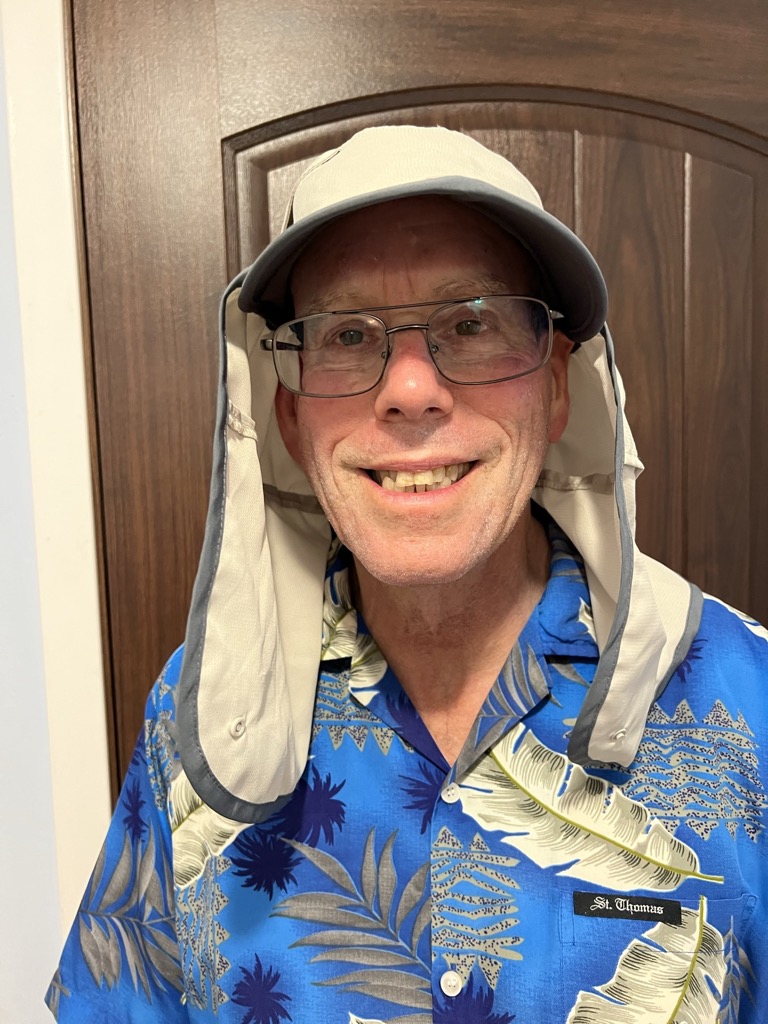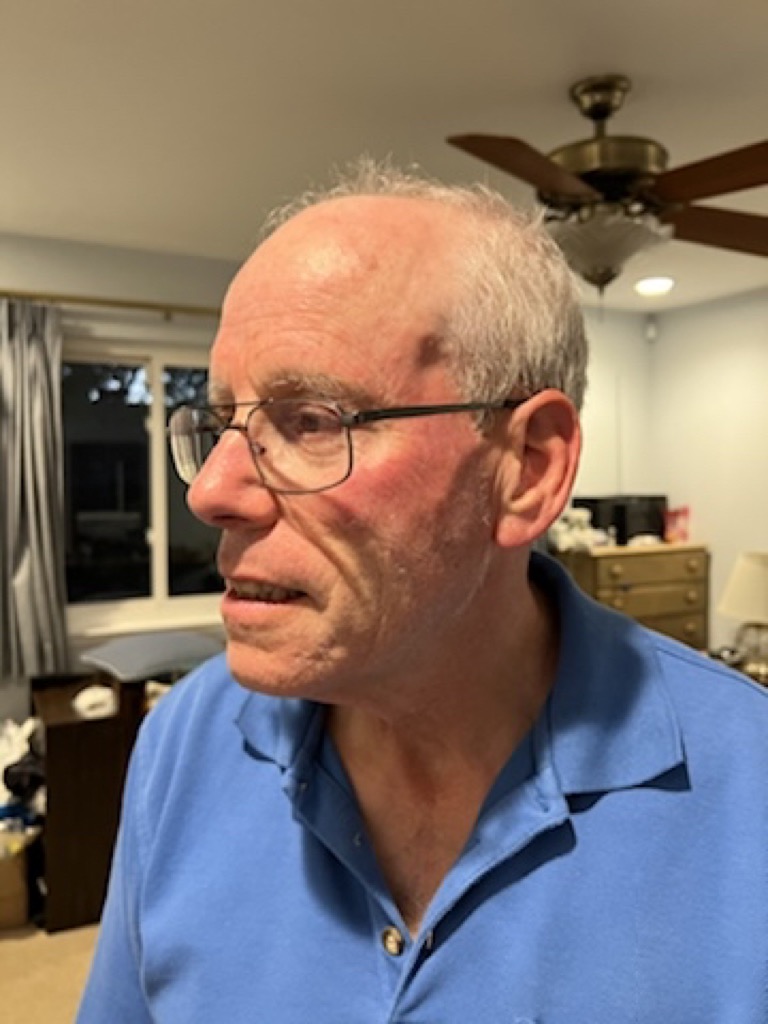I went out for a walk with Diane this morning. I put on sunscreen and wore a hat that covered the sides of my face (and even more when I clipped the two flaps together at the bottom). I felt OK for the first 15 minutes – but then I realized that my face was beginning to feel decidedly warm and I turned for home, none too soon.

We were able to go out for a walk after dark this evening. Technically, it was Nautical Twilight when we left and Astronomical Twilight when we returned, but the UV index was a nice comfortable zero so I could walk as long as I wanted.
My dermatologist had told me not to shave for a few days, and I was happy to take her advice. I used the time I saved to do some yak shaving instead.
I wrote a little program to keep an eye on the status of our Internet connection, both looking outward from home and looking inward from my Linode server – it runs the ping command in a loop and writes any failures to the console.
And then I found that I couldn’t ping my home from the Internet – the router was throwing away ping requests for security. So I hunted through the documentation and figured out how to let ICMP Echo Request packets in, and then I could actually get data about my inbound connection.
After that I realized that I had no way to see what percentage of packets got dropped except by scrolling through the entire console log, which is silly. So I changed the program to update a little sqlite database after every ping result, and then I wrote a little shell alias to let me query the database and give me the results in a more-or-less human-readable format.
After running the program for a few minutes, I discovered that I was losing about 10 percent of the packets in both directions, which is insane. The cable modem showed lots of uncorrectable errors and several channels were no longer in use, so I powered it off and on and things got better.
How much better? As I’m writing this, both the outbound and inbound connections have sent about 45,000 packets and only dropped 6, or about .013 percent. I’m not sure if that’s acceptable or not, but it’s a lot better than 10 percent. And the cable modem still shows 31 channels in use, the same as when I rebooted it (and better than yesterday’s 28). I may still want to call Comcast, but I’m not noticing the problems I was having before, such as dropouts in streaming audio, so it’s not urgent. I think.
And then I got to work on updating the home automation server, which had been acting weirdly since we got home. Some parts of the software had crashed – like the ones which interact with the alarm system, the locks, and the lighting. I brought down newer versions of the software and that got everything back on the air.
Then I got really brave and updated Mac OS on the automation server. Downloading the update (more than 2GB) took about 3 minutes instead of the 30-45 minutes it had taken on my other systems – fixing the network paid off!
After the system rebooted, I took another look at the automation software; it has been logging data about events (like lights being turned off and on) for a couple of years, and I wondered if I could get any useful information or insights from it.
After learning more than I’d planned about the database (InfluxDB) that holds the data, the dashboard (Grafana) that lets you see what’s been going on, and the Indigo plugin that connects the automation server to the database and dashboard, I discovered that the system had spent the last couple of years logging every time that we turned a light on or off, but not useful information such as when the air conditioning is turned off or on or what the house temperature was. I deleted the old data and changed what’s being logged – maybe I’ll find something interesting the next time I look.
That’s progress, right?
